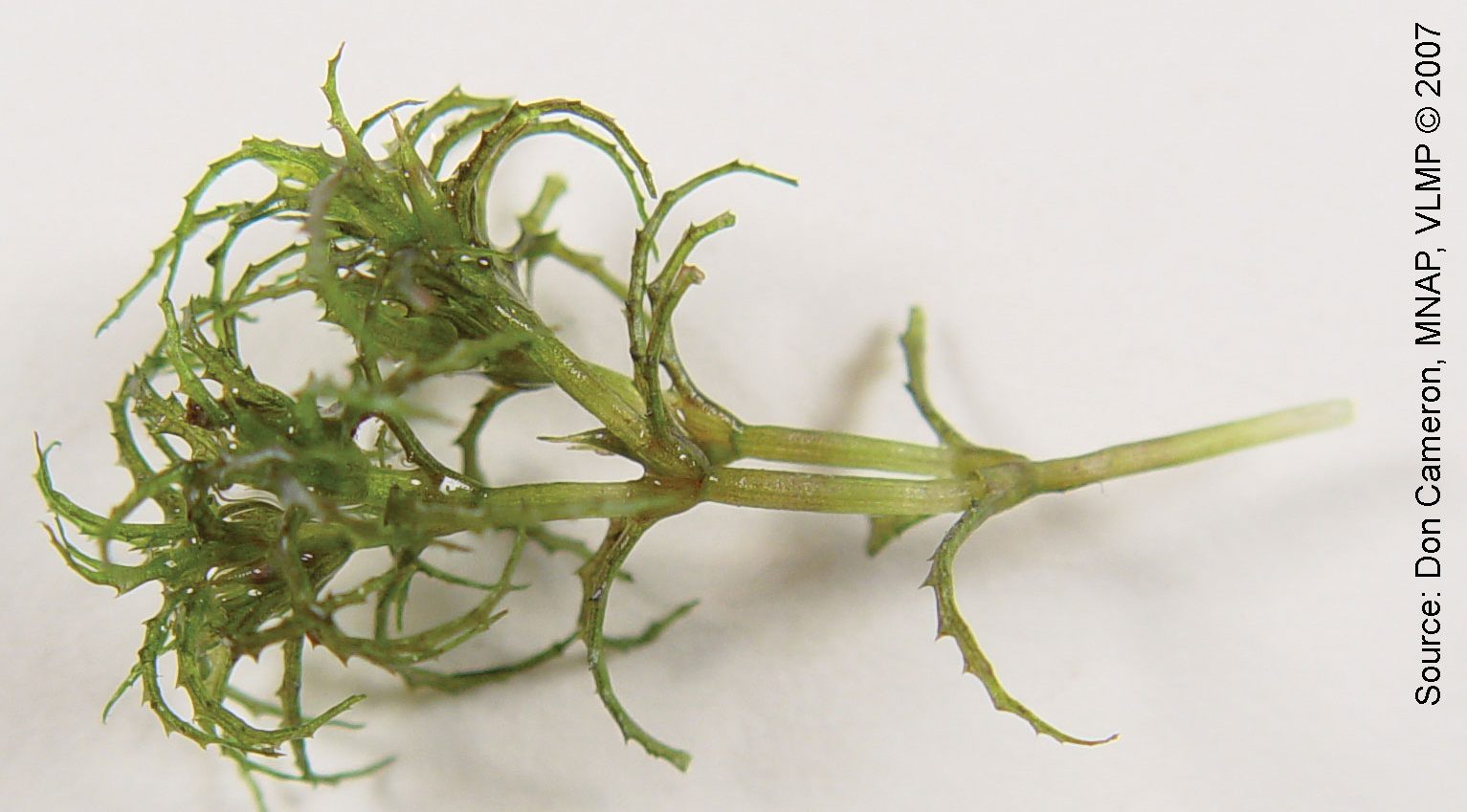Community News

European naiad/ Spiny Naiad
European naiad/ Spiny Naiad
(Najas minor)
Description: Unlike most water plants, European naiad is a true annual. Seedlings grow from slender roots, developing stems up to 2.5 meters long that often branch abundantly near the top.
Habitat: European naiad is found in the underwater plant community, growing in ponds, lakes, and slow moving streams in depths up to 5 meters. Preferring sand and gravel, the plants thrive in a wide range of bottom surfaces.
Annual Cycle: A true annual, European naiad grows anew from seeds each spring. Seeds form in the leaf stem from July through September. Although European naiad can reproduce by broken pieces during the growing season, the primary means of reproduction appears to be by seed. It is estimated that a productive, one-acre infestation will produce tens of millions of seeds per season. During the late summer or early fall, the stems of European naiad become brittle, and break up. Seeds remain attached in the leaf axils, and wind and water currents disperse the pieces.
Origin and U.S. Range: European naiad is native to Europe. It is thought to have been introduced to the US sometime in the early 1900s and is now present in much of the Eastern United States including the nearby states of New Hampshire, Massachusetts, Vermont, and New York. European naiad is currently in Legion Pond in Kittery Maine. (In 2010 curly leaf pondweed was also found in Legion Pond, making this Maine’s first known “double infestation.”)
Look a likes: May be confused with native naiads, some fine-leaved pondweeds, and some stoneworts.
